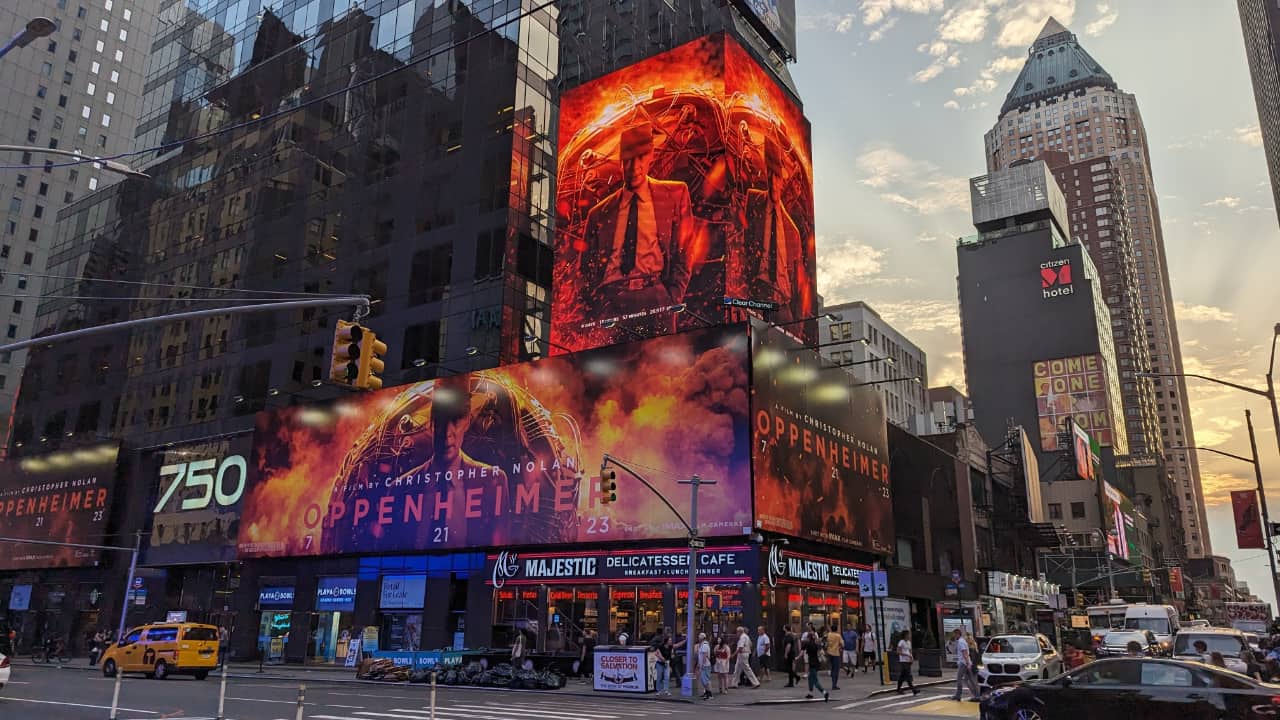
David Shapton on how starting with the most information possible is the key to great audio and video, whatever happens downstream.
I recently watched Oppenheimer and was blown away by the images - especially the black-and-white sequences. I’ve been going to Bradford’s IMAX cinema for decades. With a gigantic 19.7m by 15.9m screen, I would ideally have seen it there, but it’s shut for refurbishment leading up to Bradford City of Culture 2025. So I watched it on my TV. When a film looks that good, it makes the device you’re viewing it on look better than it is.
That’s a real effect. IMAX is the highest resolution currently available (it’s not a digital format, but if it were, the resolution would be around 18K) - and I think that affects all versions derived from the original. It was similar to when, in the late ‘90s, the makers of ER switched to production in 1080i, and you could notice a significant improvement even when watching it in lowly standard definition. It seems that by starting with more information, all the processes that reduced the quality to Standard Definition (and highly compressed terrestrial digital transmission) benefitted from that additional information.
Shortly after watching Oppenheimer, I saw an advert for a Bluetooth record deck, and it put my brain into some kind of endless loop. Bluetooth? That’s not only a digital format but one that can’t even support a full audio bandwidth. Isn’t the unique retro analog sound the reason people still buy turntables?
And Bluetooth? That’s not only a digital format but one that can’t even support a full audio bandwidth.
It gets worse. Bluetooth chipsets compress audio - admittedly quite well, but not without some noticeable degradation if you’re listening closely. Worse than that, the analog-to-digital converters found in Bluetooth chipsets aren’t likely to be exactly stellar.
And yet…
The effectiveness of Bluetooth
I find Bluetooth to be surprisingly effective. It’s probably not for audiophiles, but most of the time, you won’t notice any degradation - unless you go looking for it.
But doesn’t “going digital” mean losing that precious, wonderful, analogue “essence”? Won’t it suck the character and authenticity out of it?
I don’t think so.
I have a set of Apple AirPods Max headphones (the over-the-ear ones that look like props for the film 2001: A Space Odyssey). They only work with Bluetooth, but they sound fantastic. Any audio losses caused by Bluetooth would be swamped by the crackle and hiss from a typical vinyl record.
More importantly, you can absolutely hear the character of a vinyl recording despite a process of analog-to-digital conversion, digital compression, digital decompression, and digital-to-analog conversion.
Perhaps audio and video contain cues to the intrinsic nature of the material beyond the recorded medium. It’s a bit like the way the meaning of the number 7 stays the same, regardless of whether it is written or spoken, and is the same in every language. It certainly doesn’t depend on quality. It’s as if the sound contains meta-information about itself to assist with hearing the audible concepts contained within it, although that could just be complete woo.
Six years ago, I reviewed the remarkable Eclipse TD5010 MKII speakers. These exotic devices are certainly not cheap, but they are astonishingly good. They have only a single, relatively small loudspeaker driver, and the sound is pure and accurate. Here’s what I said at the time:
“What struck me when listening to the TD510 MK IIs is that they have an incredible spatial resolution, and this is because of their phase accuracy. It means that you can hear the original recording environments like holograms. They capture every nuance of the performance - of the original microphone, mixer, tape and outboard equipment. It’s like time travel. What does that mean? It means that when I listened to older recordings - the sort of recording that sounds old because of the way it was made - it felt like I was actually sitting in the recording studio, listening to the musicians through the vintage mixing desk and the ancient loudspeaker monitors.”
You can read the whole review here.
For me, those speakers answered the question I have been struggling with for a very long time, which is, “Can you appreciate analog recordings through digital reproduction?”. The passage above shows that you can. With the outstanding purity of those ovoid speakers, everything else was stripped away, and what was left was the essence of the recording. I know it’s a gigantic cliche, but you felt you were there, in front of those musicians, and in that studio, at that time. (I should add that my source material was CDs, presumably mastered from the original analog tapes).
Detailed pictures
So: Oppenheimer.
Shot largely on IMAX technology and viewed on a large but underwhelming TV set, the experience was revelatory. I’ve never seen black and white footage like it, and the extraordinary detail in the desert landscape scenes was plainly evident despite Amazon Prime’s compression and my middle-aged 4K TV screen.
It was as if my TV had been given a shot of hyperlucidity. I have the attention span of a gnat, but I sat through the three-hour film wanting more, notwithstanding that I wish I’d paid more attention to the plot instead of gawping at the gorgeous images.
Having worked with digital media since the late 1980s, I never thought I’d argue in favor of analog film. But the IMAX format is stupendous. It’s expensive and cumbersome compared to video, but the results are absolutely worth it.
Tags: Technology


Comments